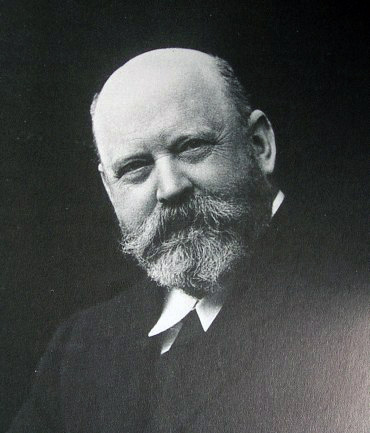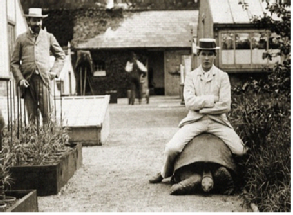Walter Rothschild - Muses & the Beau Monde
- Lilium

- Jan 20, 2021
- 4 min read

Lionel Walter Rothschild, 2nd Baron Rothschild, Baron de Rothschild, born February 1868, was a British banker, politician, zoologist and scion of the Rothschild family. Rothschild was 6 ft 3 inches tall, suffered from a speech impediment and was very shy, but he had his photograph taken riding on a giant tortoise and drove a carriage harnessed to four zebras to Buckingham Palace to prove that zebras could be tamed.
Walter Rothschild was born in London as the eldest son and heir of Emma Louise von Rothschild and Nathan Rothschild, 1st Baron Rothschild, an immensely wealthy financier of the international Rothschild financial dynasty and the first Jewish peer in England.
The eldest of three children, Walter was deemed to have delicate health and was educated at home. As a boy, Rothschild was once dragged off his horse and assaulted by workmen while on a hunting ride near Tring, an experience that he personally attributed to antisemitism.
At the age of seven, he declared that he would run a zoological museum and, as a child, he collected insects, butterflies and other animals. Among his pets at the family home in Tring Park were kangaroos and exotic birds.
As a young man, he traveled in Europe, attending the University of Bonn for a year before entering Magdalene College, Cambridge. Rothschild studied zoology at Magdalene where he met Albert Günther who sparked his interest in the taxonomy of birds and butterflies. In 1889, leaving Cambridge after two years, he was required to go into the family banking business to study finance.
At the age 21, the reluctant Rothschild went to work at the family bank, N M Rothschild & Sons in London. He worked there from 1889 to 1908. He evidently lacked any interest or ability in the financial profession, but it was not until 1908, at the age of 40, that he was finally allowed to give it up completely. However, despite his families disapproval of his interest in natural science, his father (the first Lord Rothschild) built him a museum on the edge of Tring Park as a twenty-first birthday present and footed the bill for expeditions all over the world to seek out animals.
Rothschild was 6 ft 3 in (1.91 m) tall, suffered from a speech impediment and was very shy, but he had his photograph taken riding on a giant tortoise and drove a carriage harnessed to four zebras to Buckingham Palace to prove that zebras could be tamed.


Although Rothschild himself travelled and collected in Europe and North Africa for many years, his work and health concerns limited his range and beginning while at Cambridge he employed others (explorers, professional collectors and residents) to collect for him in remote and little-known parts of the world. He employed around 400 collectors during his lifetime and accumulated specimens from more than 48 different countries, many of which were new to Western science and collectors sent him animal specimens from around the world. Rothschild mainly stayed in Tring and focused on carefully studying the creatures he received and describing new species.

He also hired taxidermists, a librarian and, most importantly, professional scientists to work with him to curate and write up the resulting collections: Ernst Hartert, for birds, from 1892 until his retirement at the age of 70 in 1930 and Karl Jordan for entomology, from 1893 until Rothschild's death in 1937.
At its largest, Rothschild's collection included 300,000 bird skins, 200,000 birds' eggs, 2,250,000 butterflies and 30,000 beetles as well as thousands of specimens of mammals, reptiles and fishes. They formed the largest zoological collection ever amassed by a private individual.
The Rothschild giraffe (Giraffa camelopardis rothschildi), a subspecies with five ossicones instead of two, was named after him. Another 153 insects, 58 birds, 17 mammals, three fish, three spiders, two reptiles, one millipede and one worm also carry his name.
In 1892, Walter’s Zoological Museum - now the Natural History Museum at Tring - opened to the public. When Rothschild opened his private museum in 1892 it housed one of the largest natural history collections in the world. Later in 1932, he would be forced to sell the vast majority of his bird collection to the American Museum of Natural History after being blackmailed by a former mistress.

Rothschild sent explorer Charles Harris to the Galápagos Islands, off Ecuador, in 1897 to collect giant tortoises. Throughout his lifetime Rothschild kept a total of 144 live giant tortoises from Galapágos and Aldabra (in the Indian Ocean). His aim was in part to protect them from hunting and potential extinction in their native habitat. He even leased the island of Aldabra for 10 years, to stop declining giant tortoise numbers by protecting them from hunting.

Despite his health, Rothschild served part-time as an officer in a Territorial Army unit, the Royal Buckinghamshire Yeomanry, where he was a captain from July 1902, promoted to major in 1903 and retiring in 1909.

Rothschild was awarded an honorary doctorate by the University of Giessen in 1898, was elected a Trustee of the British Museum in 1899 and was elected a Fellow of the Royal Society in 1911. In 1933 he was one of eleven people, involved in the appeal that led to the foundation of the British Trust for Ornithology (BTO), an organisation for the study of birds in the British Isles.
On his death in 1937, his museum and all of its contents were given in his will to the British Museum (of which the Natural History Museum, London was then a part), the greatest accession that the institution has ever received. The Walter Rothschild Zoological Museum at Tring is now a division of the Natural History Museum.

Following a visit to Hungary in 1902, Rothschild brought six live edible dormice (Glis glis) back to Tring. Some of them escaped and started breeding successfully in the wild. They have now become a localised pest over an area of approximately 200 square miles in a triangle between Luton, Aylesbury and Beaconsfield, and there are estimated to be at least 10,000 of them. Even though considered an invasive species, they are protected under the Wildlife and Countryside Act 1981.
Reading Recommendations & Content Considerations
The Man, the Museum and the Menagerie Birds, Butterflies & History
Miriam Rothschild Miriam Rothschild
















































Comments